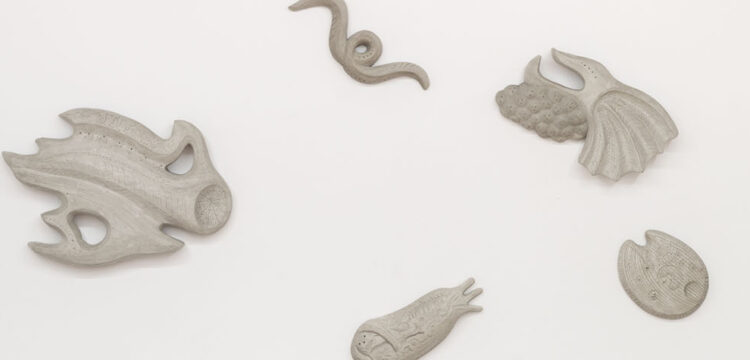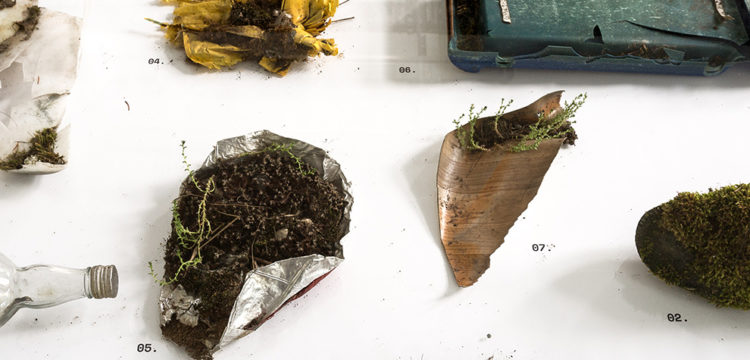Corrispondenze
12 hours to rethink a greenhouse for multispecies cohabitation
The following storytelling emerges from a twelve-hour flow of performances, reflections, and convivial exchanges, held on Saturday, 14th of September 2024, to honour the inauguration of serra madre: the new centre for artistic and cultural production, conceived and realised by Kilowatt at Le Serre dei Giardini in Bologna.
The event was named CORRISPONDENZE, inspired by anthropologist and writer Tim Ingold, who inaugurated serra madre just a few days earlier. Ingold’s call to align our awareness with the flow of things—embracing the “in-betweenness” of life—shapes serra madre’s purpose to cultivate a necessary reorientation. This shift, Ingold suggests, is vital “if we are to understand the world as the only one that we can inhabit both now and for the foreseeable future. It is, in short, a condition for sustainable living” (Tim Ingold, 2021). By creating a space for ecological imagination, serra madre situates itself in an emerging landscape of transformative urban spaces which seek to envision alternatives to the capitalist reality we live in, contrasting a future ruled by profit, exploitation, and unsustainable infinite growth. The following reading hopes to distill the performances, conversations and thoughts from the first days of serra madre,capturing a collective effort to “shift orientation” through polyphonic, multisensorial and convivial experiences.
CORRISPONDENZE was co-curated by serra madre and the London-based duo FRITTO MISTO: hosts, educators and spatial practitioners Carlotta Novella and Gaia Crocella. Using food as a critical agent they create multi-sensory events, edible landscapes, immersive performances, multidisciplinary actions, and discursive dinners, reimagining shared spaces using the practices and the principles of the commons.
CORRISPONDENZE unfolded as a day-long ritual in three acts:
ACT I: SOGNANDO IFE
A morning collective exercise, breakfast and workshop which saw a corporeal awakening guided by yoga instructor Gaia Crocella, where everyone was welcomed to serra madre through a group meditation towards embodied practice. The sensory awakening was also gastronomic, with the use of aromatic teas, home-made syrups, warm porridge with balms and jellies, all assembled and enjoyed collectively. The workshop by ife collective (Vicenza) framed a moment to look at the greenhouse as an artefact and living space, (re)writing multi-species narratives and finding direct inspiration in the grounds of Le Serre dei Giardini.
ACT II: IN FERMENTO
Two parallel afternoon workshops offering an immersion into the world of fermentation through kombucha and koji. Michele Bacchiega and Fruilab (Bologna) explained the theory behind the multitude of microorganisms living in perfect symbiosis within a jar of kombucha. Comunità Frizzante (Rovereto) showed us how we can create a community using koji, the filamentous fungus that activates effervescence.
ACT III: MUFFE BUFFE(T)
A discursive and performative evening dinner guided by FRITTO MISTO (London) through recipes, stories, and rituals associated with sensory and cognitive perceptions derived from foreign organisms, aiming to digest old beliefs and discover new “correspondences” across multiple species and spaces. The dinner was structured around the insightful contributions of guest speakers Marco Boscolo, Tania Re and Annalisa Metta.
PART 1: “We will not be granted survival unless we learn to tell our story differently”
After three long years of refurbishment, serra madre‘s vision of becoming a space for cultivating desirable and accessible futures finally became a reality in September 2024. For its opening weekend the building welcomed artists and experimental initiatives, framing serra madre as a multidisciplinary platform to encourage ecological thinking. After many years of disuse, sitting dormant in the vibrant context of the Serre den Giardini, the monumental greenhouse was ready to re-open and begin a new transformative journey. This transformation, both physical and in terms of use and programme, necessitated a broader reconsideration of what the greenhouse “could be,” while also delving into its original identity.
In “Greenhouse Stories. A Critical Re-Examination of Transparent Microcosms” (2023) Laura Drouet and Olivier Lacrouts (d.o.t.s) describe how greenhouses were initially designed as a built device able to simulate the living conditions of a different environment, with the intention to extract plants from their native environments and “migrate” them to colder ones. The greenhouse, through its technology and form, could manipulate time, place, and even temperature, making it into one of the earliest and most powerful imperialist tools of colonisation. By uprooting plants from the natural ecosystems where those vegetal beings originated and evolved, the greenhouse enabled a systematic and long-lasting process of separation and disconnection. The simple yet irresponsible ability to “move an ecosystem” enabled the ultimate assertion of dominance by European colonial powers, impoverishing our understanding of the world as a complex and non-deterministic system. The greenhouse was therefore instrumental in establishing long-lasting disproportionate imbalances of power and the distinctly Western notion of human exceptionalism, deepening the rift between human beings and vegetal beings, as well as with all other species. For centuries, and even today, the greenhouse has been far from being a space for ecological imagination.
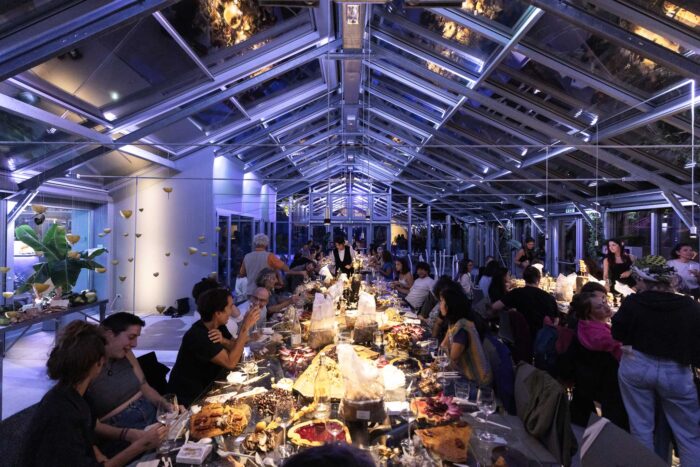
As we began exploring serra madre’s history (bones, skin and all) it soon became clear how we wouldn’t be able to shape its future without acknowledging its past. With the intention to position ourselves as critical spatial practitioners, we worked together to deconstruct the history embedded within the greenhouse. This process of deconstruction was crucially kept open, accessible to all to see. An indispensable step in the inauguration ritual for serra madre, so as to forge a new identity for the space—one that lays the groundwork for more compassionate and lively relationships with the living world and all the more than human ecosystems (Laura Drouet and Olivier Lacrotus, 2023). This act of reckoning and reimagining was at the heart of CORRISPONDENZE, and it is also what we hope will emerge—through the story recounted in this article—as a critical and collective tool for rethinking other contexts that carry with them histories of systemic oppression. Afterall, as described by Paul B. Preciado in Dysphoria Mundi (2022), “we will not be granted survival unless we learn to tell our story differently—to dream differently.”
Beyond their history, greenhouses play a crucial part in the shaping of our relationship with the world that surrounds us. Hierarchy, productivity, extraction, and power differentials—the foundational elements of colonialism and later capitalism—found in greenhouses both a physical and cultural ally. This alliance has persisted and strengthened into the present day, manifesting in the energy-intensive expanses of greenhouses dedicated to the mass production of plants (for domestic and commercial use) that are mere representations of “what we perceive as nature” and are intrinsically distant from it. These greenhouse-born plants are the symbols for a society centred on image and consumption—of the sempreverde (evergreen). This process of dislocated reproduction of sameness—where plants are turned into clones, homogenized into commodities, and scaled up to serve the goal of indiscriminate profit and capital accumulation—can be understood through the framework of the Plantationocene. As articulated by Donna Haraway and Anna Tsing, this concept provides an epistemological lens that “directs our focus toward the cultivation of food and the plantation as a system built upon the coerced labor of multiple species,” with greenhouses emerging as strategic tools in this system of control and exploitation, drastically reducing the diversity of beings and creating conditions where certain species proliferate at the expense of others. Because the plantation structure necessitates either genocide, displacement, or some form of captivity, replacing local labour forces with external, often coerced, workers. “It is also important to include the forced labour of nonhumans—plants, animals, and microbes—in our thinking. So, when I think about the question, what is a plantation, some combination of these things seems to me to be pretty much always present across a 500-year period: radical simplification; substitution of peoples, crops, microbes, and life forms; forced labour; and, crucially, the disordering of times of generation across species, including human beings,” observes Donna Haraway in Reflections on the Plantationocene, a conversation with Donna Haraway & Anna Tsing moderated by Gregg Mitman.
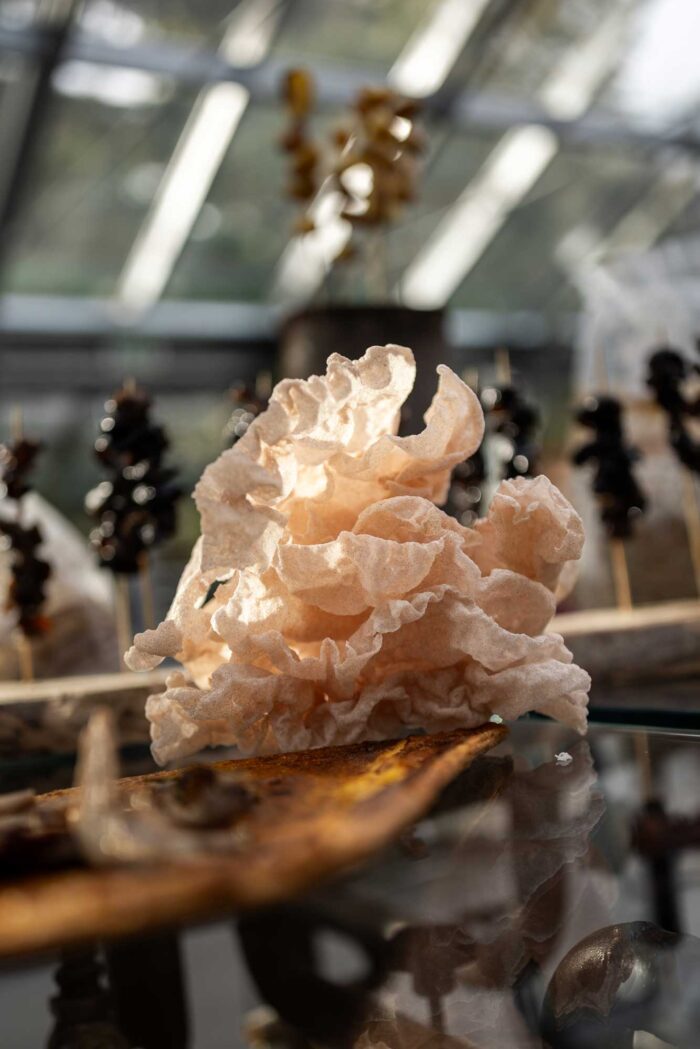
In La bianca scienza, author Marco Boscolo enters into this debate offering a meaningful perspective from where to look at greenhouses and botanical gardens as crucial institutions of power, in the history of European colonialism, cementing in the culture the domination of certain populations over others. For the rulers of imperial powers, royal gardens became resplendent displays of authority and prestige: the greater the variety of exotic plants cultivated within their confines, the more their sovereignty could project its might. These gardens were transformed into hubs for expanding botanical wealth, extracted from colonies through meticulous study of individual species with economic potential. They facilitated the propagation of specimens to establish vast plantations and fostered the development of superior hybrids and varieties to maximise profitability and reinforce imperial investments.
Marco Boscolo was one of the three special guests at ACT III: MUFFE BUFFE(T), where he opened the discursive and performative dinner by addressing the participants in the garden with a gin-tonic at hand. But this was not a regular drink to refresh the thirsty palates before sitting down for dinner. Made with Lemon Verbena (Verbena Odorosa), gin and tonic water, this crystal clear glass of botanical goddess was the carrier of a greater story, that of the colonial legacy of the greenhouse and its role as enabler of careless scientific progress. The selection of the drink and its preparation were not incidental; rather, they were carefully conceived to tell, in a synesthetic experience, the emblematic story of a plant that played a pivotal role in the development of British imperial power: the Peruvian bark of cinchona, from which the alkaloid we call “quinine” is extracted in the West and used for various purposes, including, now a days, tonic water.
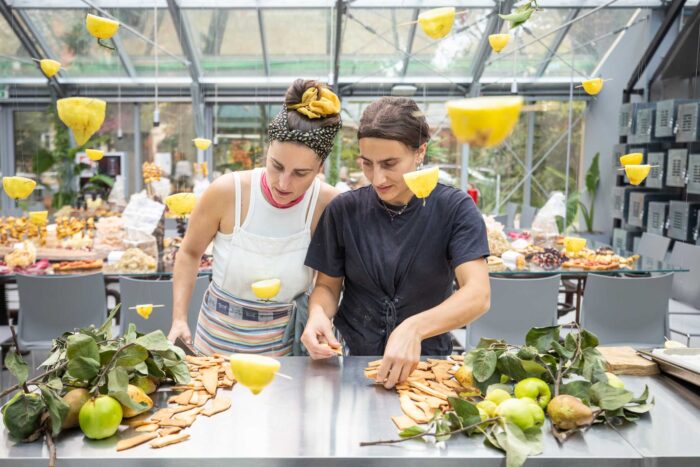
Legend tells that in 1639, Ana de Osorio, wife of the Spanish Viceroy of Peru, was cured of a malarial fever with a remedy derived from the bark of a tree that grows in the Andes, leaving European populations astonished, as they had no effective medicine for malaria. This episode is said to have initiated the introduction of the Cinchona tree to Europe, which—as a clear demonstration of a true process of appropriation—owes its name to Chinchón, the Spanish city near Madrid where Ana de Osorio held the title of countess. It is uncertain exactly when the Inca began extracting quinine from the bark of the Cinchona tree as a medicinal remedy. However, its global significance emerged between the 1600s and 1700s, when Europeans discovered how Andean populations used it to treat various illnesses, including malaria, as the legend we mentioned earlier recounts. What initially began as genuine admiration for these medicinal practices quickly turned into an obsessive pursuit of appropriation and reproduction in the minds of the conquerors, which stripped indigenous populations not only of their dignity and intelligence but also of their humanity as they became mere obstacles between the plant and its appropriation. As if that weren’t enough, the Europeans falsely alleged that the cause of this crisis had lain in the “backward” techniques used to produce it in South America.
The ever-increasing quantities of quinine needed to sustain and continue the colonial expansion in West Africa demanded intensive production of the Cinchona plant. It is here that the greenhouse must be recognised as a historical tool used to perpetuate processes of invasion, racialization, and slavery—processes whose ideologies, methods, and enduring legacies continue to shape our present reality. Indeed, the Royal Botanic Gardens in London, along with a newly invented portable greenhouse (known as the ‘wardian case,’ in honour of its British inventor, Nathaniel Bagshaw Ward), specifically designed to transport small tropical plants more easily, played a key role in enabling Britain to become the global leader in the quinine market. Thanks to both portable and non-portable greenhouses, plants were removed from the Andes, transported to London to be selected, and then re-shipped for a long journey to India, where, after deforesting entire areas with climates similar to those of South America, they were replanted (those that survived) to establish an industrial plantation. In this process, the plants underwent the same exploitation, uprooting, deportation, and objectification that, during the same period, was inflicted upon colonized and enslaved populations.
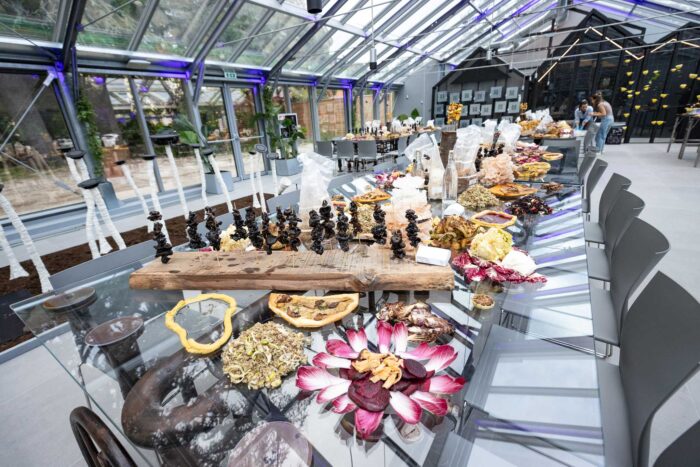
The cultural framework linking ecological crises with systems of structural social inequality, such as colonialism and capitalism, is clear: the hierarchy of domination, the accumulation of power and wealth for some at the cost of others. As Paul B. Preciado aptly asserts in Dysphoria Mundi, let us not forget that the Fordist assembly line—a cornerstone of industrial capitalism—was originally invented to industrialize the process of killing, skinning, and dismembering animal bodies in the first industrial slaughterhouse in history. These examples, just two among many others, compel us to recognize how the most toxic human systems of resource extraction, production, and consumption are always expressions of extremely hierarchical relational forms, often not only between one population and another, but also between one species (human) and another (non-human): the Plantationocene, as we have previously said. Building on this, as Boscolo consistently reminds us in the case of quinine, science and technology—developed within botanical gardens—were far from neutral tools designed to enhance the collective well-being of ecosystems, communities and individuals. Instead, they were deliberately co-opted to serve and perpetuate the Western colonial project, reinforcing the very hierarchies that underpinned exploitation and domination. The adoption of these portable greenhouses enabled the importation of six times the amount of plants in just fifteen years compared to the previous century. Yet, the cure for malaria was primarily directed towards Western markets and the military, despite the local populations working in malaria-endemic plantations being exposed to immense risks—further amplifying a dynamic of inequality in which some lives were deemed more valuable or important than others.
But the history of quinine is the history of many other “sacred” plants, another of which is coffee, revealing the layers of exploitation interwoven with their consumption. Until the seventeenth century, despite the growing popularity of coffeehouses in Europe as meeting places—spaces, of course, reserved exclusively for men—Arab merchants held an absolute monopoly on coffee beans: they even roasted them before exporting them to ensure they could not be made to germinate. But, as Michael Pollan accurately recounts in This Is Your Mind on Plants (2021), once again, Western colonial cunning managed to reverse the power dynamics surrounding the coffee plant, Coffea arabica. In 1616, a Dutch merchant managed to smuggle coffee plants into Europe, where they were cultivated in glasshouses in the botanical garden of Amsterdam. Here, the plants were propagated and sent to the Indonesian island of Java—at the time a Dutch colony—where they were transformed into full-scale plantations. Following, in 1714, a coffee shrub propagated in Amsterdam was given to King Louis XIV and planted in the Jardin du Roi in Paris. Few years later, through the theft of a former naval officer, the plants made their way to the French colony of Martinique, where they thrived. By 1730, the French Caribbean colonies were sending coffee to a Europe now addicted to caffeine. This was a drug that, removed from its original guardian communities—who, through a trusting interspecies relationship, had for millennia understood its healing properties—and transplanted into the hands of the West, nurtured over the following centuries a form of consciousness that was focused, linear, abstract, and efficient, tied to mental labor rather than leisure. Thus, caffeine, in its journey through a colonial geography of imperial greenhouses, became not only the essential substance for the Age of Enlightenment, of reason, but also a true fuel for capitalism, which demanded work rhythms stretched beyond the limits of bodily endurance, productivity, concentration, and the separation of body and mind.
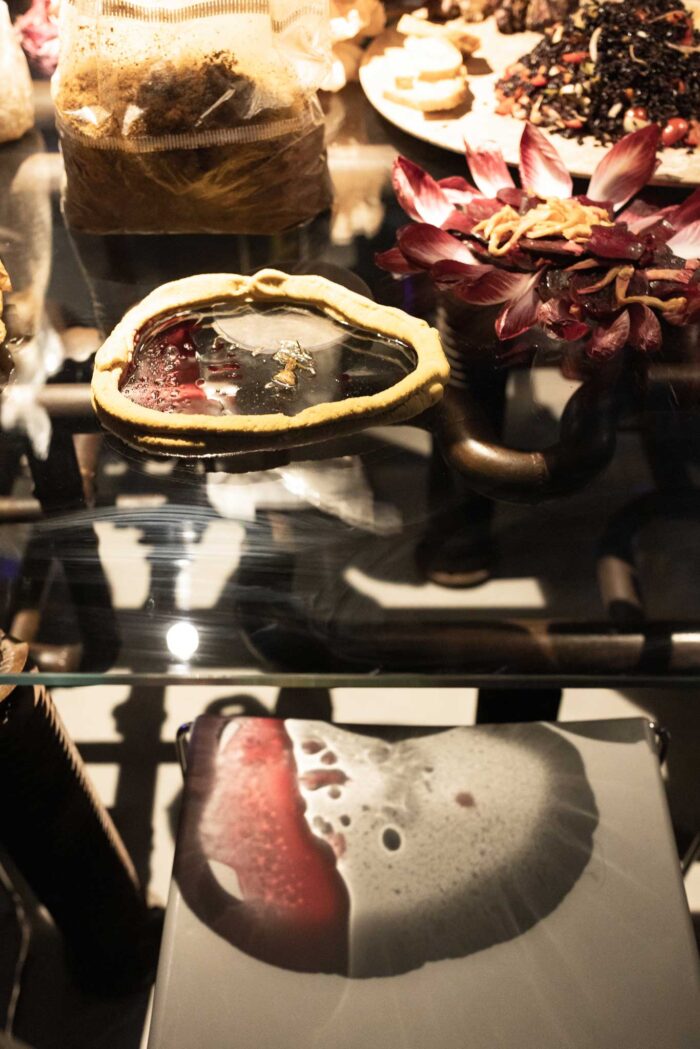
PART 2: (un)learning from mycelial and monstrous landscapes
We have now learnt that it is impossible to overlook the greenhouses as fundamental instruments of an artificial and man-made production and management of nature—they embody the core mechanism of human control over the non-human world. They are not just structures; they represent a deliberate effort to impose dominion over ecosystems and species, further reinforcing the separation between human and non-human entities. The development of an ecological, relational way of thinking must therefore emerge from experiences that establish correspondences with the world around us—experiences that can deconstruct, not just cognitively but also in our bodies, the anthropocentric perspectives and biases we’ve internalized.
Muffe Buffe(t) was conceived as a space-time for deconstruction—an opportunity to sensorially, intellectually, and aesthetically explore how greenhouses can evolve from instruments of colonization into spaces where we can reflect, celebrate, and perform non-hierarchical forms of “urban natures,” as the geographer and urbanist Matthew Gandy refers to them. Spaces where humans, non-humans, and even non-living entities can collectively shape alternative possibilities for cohabitation.
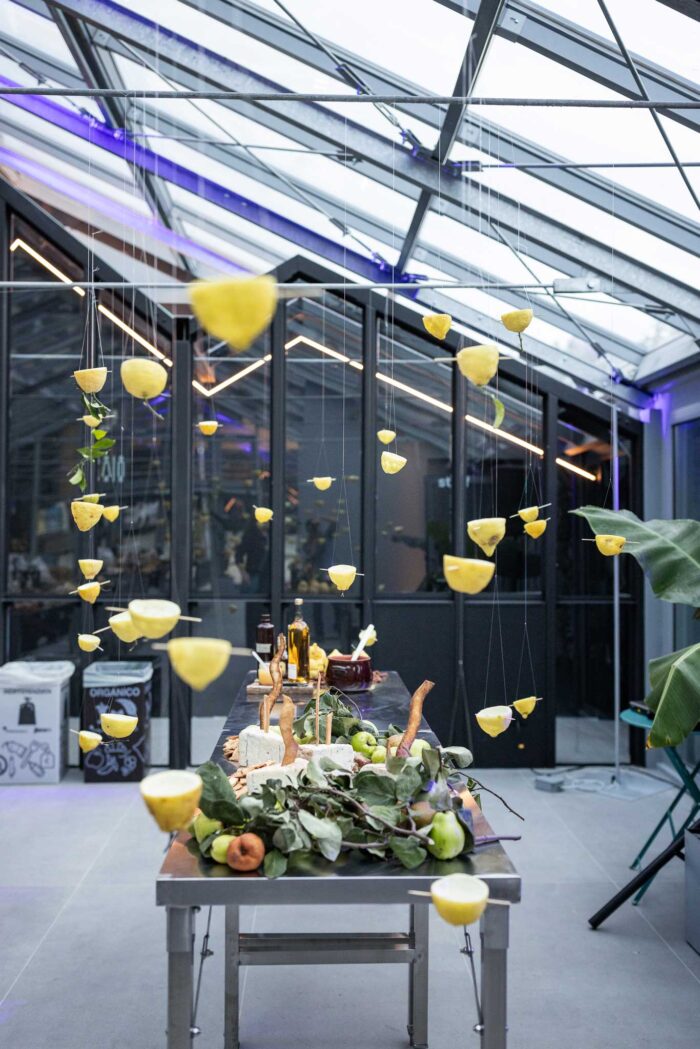
An example again is the greenhouses—to serve “The Man” against nature, but has also taught us that molds, fungi, bacteria, and psychotropic plants are toxic and dangerous organisms for humankind. The Western notion of human exceptionalism, believing that humans exist outside or above the rest of the natural world—inherently devaluing communities engaging in non-hierarchical relationships with nature—has convinced us that anything that cannot be categorized, anything that transforms and decomposes, or contains a nature mysterious to us, is naturally harmful to our health, thus ‘monstrous’. It follows that the prevailing response that has taken root in the West toward ambiguous organisms is fear, repulsion, and disgust—a sort of mycophobia. For centuries, we have deprived ourselves, and continue to do so, of knowledge and experiences that could radically transform our relationship with other species. By employing a few revealing anecdotes to challenge the Western binary perspective cognitively separating nature and culture, we aim to propose tools for embracing the multinaturalist perspectivism of Amerindian cosmology, as articulated by anthropologist Viveiros de Castro—fostering the ability to “see as,” to inhabit the perspective of other forms of life.
“Last night I dreamed of mushrooms.”
This excerpt opens a chapter from Stupefacenti e proibite: le piante maestre (2021) by Tania Re—the second guest at our MUFFE BUFFE(T) dinner. A clinical psychologist and anthropologist specializing in the Anthropology of Health and Ethnomedicine, Tania Re advocates for the therapeutic use of “forbidden substances.” The true story continues:
“In traditional societies, dreams have always held prophetic value: they are a way for ancestors to connect with the living, just as elements of nature ‘call’ humans through dreams. As Dante reminds us in the Divine Comedy, the most truthful dreams occur just before waking. Without overthinking it, I called my Mexican friend Mariana, who also shares a long history of experiences with plants, to tell her about my dream.
Mariana, almost astonished, said: ‘cuando vienes?’
I replied without hesitation: ‘vengo subito.’
Finding a flight from Italy to Mexico City in November wasn’t a difficult task. Work at that time was manageable, so within 48 hours, I had booked my trip.
[…]
The interview with Julia Julieta was a great prelude to the ceremony, which, for us Westerners, is inevitably accompanied by an understandable fear of the unknown.
Jiulia Jiulieta’s singing provided a backdrop for the six-hour ceremony, with a sweetness and devotion that still moves me as I write. Julieta had arranged her mushrooms on two white plates, one for me and one for Mariana. The mushrooms were to be eaten fresh, without removing even the last part of the stem, still earthy and freshly picked.
Taking psilocybin, the active compound in those mushrooms, gave me an overwhelming sense of peace and harmony with everything around me—the people and the rest of creation.
It’s no coincidence that one of the current therapeutic developments involving psilocybin focuses on supporting terminal patients, aiming to address the existential anxiety that arises in the face of incurable illness and the inevitability of death.”
Tania Re read aloud this excerpt, animating and accompanying a mushroom-based edible landscape—called “Le Maestre”—designed by FRITTO MISTO, where the performative act and the eating experience merged into a seamless dialogue, embodying a process of relational art:
- Baked Bologna potato towers with Pulmonaris mushroom
- Stacked Judas ears with Bologna flavours
- Hummus and lakes of cocoa oil, truffle, beetroot and pleurotus ostreatus powder
- Pink oyster mushroom ceviche with turnip and red endive
- Rice paper flowers
- Powder and fragments of extra-dark chocolate, cocoa beans…
These are only a few of the imaginative food sculptures inspired by Tania Re’s research, which transformed serra madre into a space of wonder capable of opening paths to new ways of relating to these organisms, as one might cherish dear and endearing friends (MUFFE BUFFE(T), in fact, means “funny molds“ and “molds buffet“ in Italian). Our body hosts a community of viruses, bacteria, and fungi—our “microbiota”—forging invisible yet vital relationships with the food we eat. In Let’s become fungal. Mycelium Teachings and the Arts (2023) author Yasmine Ostendorf-Rodríguez explores this symbiotic view of life through Paxson’s notion of “microbiopolitics,” which means to recognize the agency and political power of the microbes living and interacting with our bodies as positive enhancers of digestive processes, rather than associating them with danger and fear of infection. “By understanding our digestive system as a sculptural tool, diners become participants in an environmental sculpture in progress where the act of nourishing oneself regenerates and shapes the landscape in which we live” says artist Jorge Menna Barreto about his project RESTAURO that in 2016 operated as a restaurant to reflect upon eating habits and their relationship with the landscape during the 32nd Bienal de São Paulo.
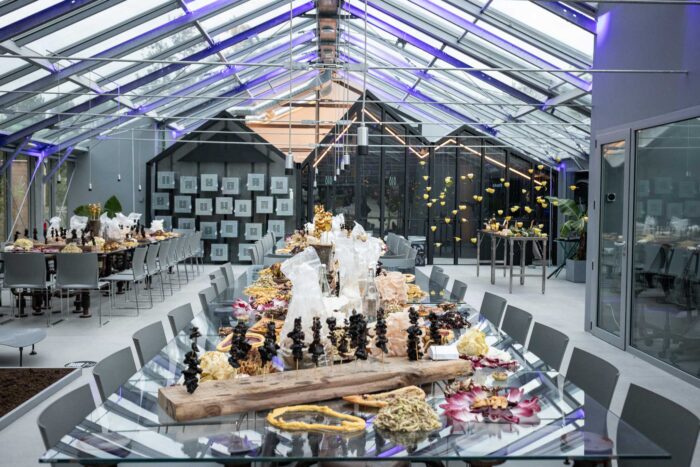
Food occupies the space of in-betweenness that allows us to correspond with microscopic biological agents, while artistic practices—such as MUFFE BUFFE(T) and RESTAURO—offer an opportunity to embody and deepen this reflection.
The sense of wonder evoked by Le Maestre edible landscape doesn’t differ much from the sense of awe provoked by the psilocybin mushrooms, where letting go of control and embracing mystery generates profound relief, fostering a deep connection between oneself and nature. As Tania Re shared through her performative reading, psychedelics are gradually experiencing a renaissance, with new waves of research revisiting hallucinogenic substances as potential treatments for psychiatric conditions. Studies on psilocybin mushrooms teach us something significant: the experience of embracing mystery, relinquishing control, and deeply connecting with nature is inherently healing. It serves as an antidote to frustration, fear, and anxiety caused by a society rooted in control, individualism, and hyperproductivity. Familiarizing ourselves with the unexpected and the surprising, challenging commonly accepted assumptions, and stimulating sensory perceptions could reawaken our profound connection to the natural world. Such experiences might even serve as antidotes to the ills of capitalism—social injustice, climate collapse, and our collective and individual lack of imagination.
In this endeavor, fungi and art come to our aid. Both provoke surprise, generate metaphors, and inspire teachings. They “throw up questions, not answers”—says Yasmine Ostendorf-Rodríguez—acting as conduits for transformation and understanding.
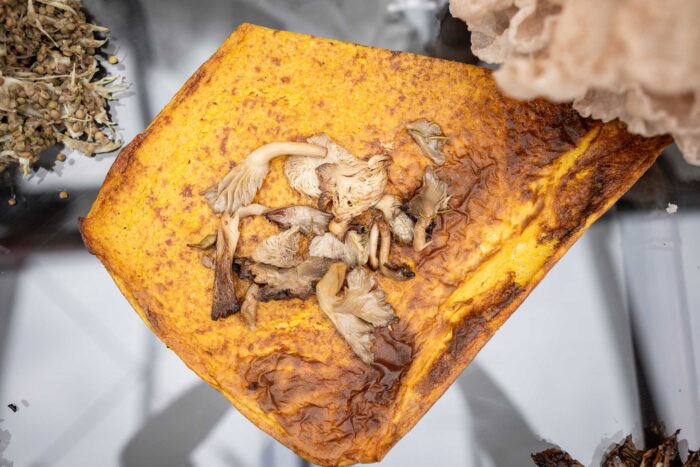
The reappraisal of the unknown and the necessary relinquishment of the need to control everyone and everything influenced the design and composition of the dessert served during our MUFFE BUFFE(T) dinner. Named “Il Mostro” this odd looking pudding was created in collaboration with Annalisa Metta, author of Il paesaggio è un mostro. Città selvatiche e nature ibride (2022). The dessert featured gorgonzola semifreddo, citrus compote, and a sweet wine crafted from noble rot (botrytis); a delicate pairing of gorgonzola, shortcrust pastry, fruit, citrus honey, and bitter cocoa; and syrups of pine and Cornelian cherry. A true still life, this sweet moment invited diners to move beyond viewing the landscape as merely a form of natural capital to be preserved and managed, or as a servant to human needs. Instead, it called for rediscovering the living world not as a resource to be exploited, but as a co-living presence.
Embracing this perspective while consuming the final course of the dinner, Annalisa Metta guided us to reconsider the imperfection of the living world and its inherent state of permanent mutability—an expression of the agency of a multitude that shapes everything, including ourselves, through collaborative, symbiotic, and ecological interactions, governed by a complex intelligence beyond human control. A monster is commonly considered something terrible and frightening, precisely because it is ambiguous much like molds and microorganisms, hybrid, human and non-human—inevitably complex, controversial, multiple, and irreducible to unity, coherence, or simplification. Conceiving the landscape as a monster, whose multispecies components collaborate to sustain a singular organism, reveals that the actions required to animate a landscape are not solely human—focused on preservation and conservation—but rather a collaborative and negotiated interaction with a plurality of agents. An incessant overlapping of technical actions produced by countless forms of existence. Interpreted through the lens of monstrosity, the landscape transforms from an object to a subject: shifting from something that exists only when observed, to something that exists because it acts (Metta, 2022). Observing fungi’s life is helpful to understand this shift in viewpoint: fungi decompose dead matter and “make sure no energy is lost and is instead transformed into new life. They are trash monsters and value-makers at the same time” (Yasmine Ostendorf-Rodriguez, 2023). Fungi and other microbes teach us that degeneration and regeneration are really interwoven in the transformation of energy, challenging dualistic perspectives. Through the mycological perspective suggested by Let’s become fungal methodology and embodied in the “Il Mostro” edible landscape, we come to understand that “transformation is the best conservation, a metamorphosis to extend a lifetime in a new form. Without death, there would be no new life.”
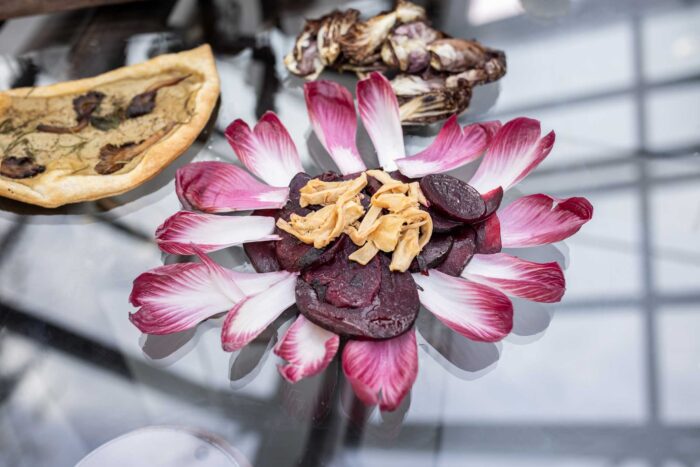
CONCLUSION: Rethinking spaces and spatial practices otherwise
Twelve hours of performance—a long journey whose legacy continues to resonate in serra madre and the ecosystems around it. The learnings are still with us, intertwined with the microbes and bacteria we ate together—served as a ritual to critically re-examine those “transparent microcosms”—as they are defined in Greenhouse Stories edited by d-o-t-s— that for centuries have contributed to the exploitation of life, both human and non-human. This reflection opens up a broader discussion that responds to the need to redefine the role of spaces and spatial practices, especially in the face of the interconnected environmental, cultural, and socio-political crises we face today. It calls on spatial practitioners—architects, researchers, curators, artists, urban activists, and citizens—to collectively imagine ways in which the production of space can be different, moving beyond the traditional view of space as a static construct, designed solely by a single creator—The Architect. Instead, it encourages an understanding of space as something shaped by the practices and relationships it shelters, hosts and fosters. Just as we embraced the interpretation of the landscape as an expression of living and non living interactions through the lens of monstrosity proposed by Annalisa Metta, we also wish to consider architectural spaces as the result of a continuous negotiation between multiple actors. Assuming this perspective, spatial design constitutes a collective process of creating situations that enable the multi-fold, the multidimensional possibilities of inhabiting and relating to spaces, without the certainty that these interactions will occur as anticipated or within a predetermined timeframe. Nishat Awan, Tatjana Schneider, and Jeremy Till (2009) discuss this perspective through the concept of “spatial agency,” where, if “agency” is understood as “the capability of acting otherwise”—the capability of triggering a transformative social change, the architect is an agent, but “one among many agents.” This idea of spatial agency—which is not only physical but above all relational—redefines the production of space by shifting focus from the architecture as top-down creation to a wider process of transdisciplinary collaboration where the roles of both experts and users are re-imagined beyond mere participation, questioning and potentially transforming dominant forms of living together (Stavrides, 2016).
By co-producing space through shared rituals and performative acts—such as meals, workshops, performances and acts of storytelling—participants cultivate new ways of inhabiting rooted in cooperation, care, and imagination. Food, in the context of MUFFE BUFFE(T), served as a critical medium to explore themes of ecological stewardship, cultural identity, and collective imagination. Inspired by Sandi Hilal and Alessandro Petti’s exploration of hospitality through al-madafeh, (Arabic for “guesthouse”) the roles of host and guest are reinterpreted as reciprocal and transformative. Hosting becomes a radical act of inclusion, dismantling power hierarchies and fostering spaces of shared knowledge and belonging. Within this framework conviviality emerges as a radical pedagogical tool through which the multiplicity of possibilities and roles of space can be (re)designed—including the one of the greenhouse. In these convivial spaces, rituals take on new significance as acts of embodiment and bodily performance. In them, the order and values of a community are physically experienced and solidified (Byung-Chul Han, 2019). By engaging with the most intimate and communal practices of conviviality, such as eating together, we create spaces where belonging and connection are actively shaped and reaffirmed. Inspired by mycelial principles, these practices generate non-hierarchical, regenerative networks that redefine both space and the relationships emerging within it.



